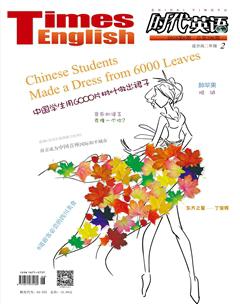克隆一个你
Saving lives has always been an important mission of science. Now science, and indeed all society, is facing a new dilemma: whether or not to try and save more lives through human cloning.
The first cloning experiments in the 1950s involved frogs and toads. It was not until 1997 that scientists successfully cloned the first mammal, the now world-famous sheep known as Dolly. Cloning techniques have continued to improve since then, and today there are cloned mice, salmon, and cattle.
Some scientists want to apply the methods used in cloning animals to produce skin, organs, and other body parts for humans. One of these methods involves taking adult cells from the brain or blood and growing them into new tissues. Another, more complex, technique takes embryo cells and develops them into a wide variety of cell types and tissues. It is this planned use of human embryos that has resulted in controversy and criticism.
The cloning of human cells provides the potential to find cures and eliminate diseases. The dream of some researchers is to create a utopian world of good health. Others question whether it is right to “Play God” in an attempt to cure the disabilities and diseases.
Some of the great hopes for cloning include the ability to perform transplants, whenever they are needed, using cloned organs. For example, people with lung cancer may simply have their lungs replaced with healthy ones. Scientists also look forward to the day when people in wheelchairs can walk again, and illnesses such as Alzheimers disease and Parkinsons disease can be prevented.
Many people fear the effects cloning could have on our society. They imagine masses of identical people, and the production of “perfect” humans for warfare or slave labor. We might even see headless human bodies being stored at hospitals for their “spare parts”. With such possibilities for the 21st century, human cloning will no doubt continue to receive widespread attention and scrutiny.
挽救生命一直是科学研究的一项重要使命。如今,科学研究,其实是整个社会,正面临着一个新的困境:是否要通过克隆人类来挽救更多的生命。
克隆實验开始于20世纪50年代,对象是青蛙和蟾蜍。直到1997年,科学家才成功地克隆出了第一例哺乳类动物,即举世闻名的“多莉羊”。克隆技术从那时起得到了持续的提升,现在已经有克隆老鼠、克隆鲑鱼和克隆牛。
一些科学家想用克隆动物的方法来制造出供人类使用的皮肤、器官与其他的身体部件。方法之一是从大脑或血液中提取成熟的细胞,把它们培养成新的组织。另外一种较为复杂的技术,则是把胚胎细胞培养成各式各样的细胞种类及组织。正是这个计划使用人类胚胎的想法引发舆论争议与批评声浪。
克隆人类细胞为找到治愈疾病的疗法并消灭疾病提供了可能性。一些研究人员的梦想是建立一个没有疾病的乌托邦世界。其他研究人员则质疑人类企图治愈伤残者和治疗疾病去扮演上帝的角色是否正确。
人们对克隆的一些殷切希望包括在需要进行移植手术时,人们能使用克隆器官,比如肺癌患者可能仅需换个健康的肺。科学家也期待着有一天坐轮椅的人能再站起来,老年痴呆症及帕金森综合征等疾病能得到预防。
很多人担心克隆会对社会产生影响。他们想象有一天可能会出现一大群长得一模一样的人和应战争或苦役需要而制造出的“完美”人类,我们甚至可能看到存放在医院里作备用的无头的人体。在21世纪具有多种可能性的情况下,克隆人类毫无疑问会继续受到广泛的关注及审视。
dilemma /d?'lem?/ n. (进退两难的)困境
eliminate /?'l?m?ne?t/ v. 消除
Fatty foods should be eliminated from the diet.
transplant /'tr?nsplɑ?nt; 'tr?nspl?nt/ n. (器官)移植
He was recovering from a heart transplant operation.
scrutiny /'skru?t?ni/ n. 仔细的审视
Their activities have come under police scrutiny.
- 时代英语·高二的其它文章
- 偶然
- 东方之星
- 种苹果
- 坦诚
- 中国学生用6000片树叶做出裙子
- 8道游客必尝的四川美食

